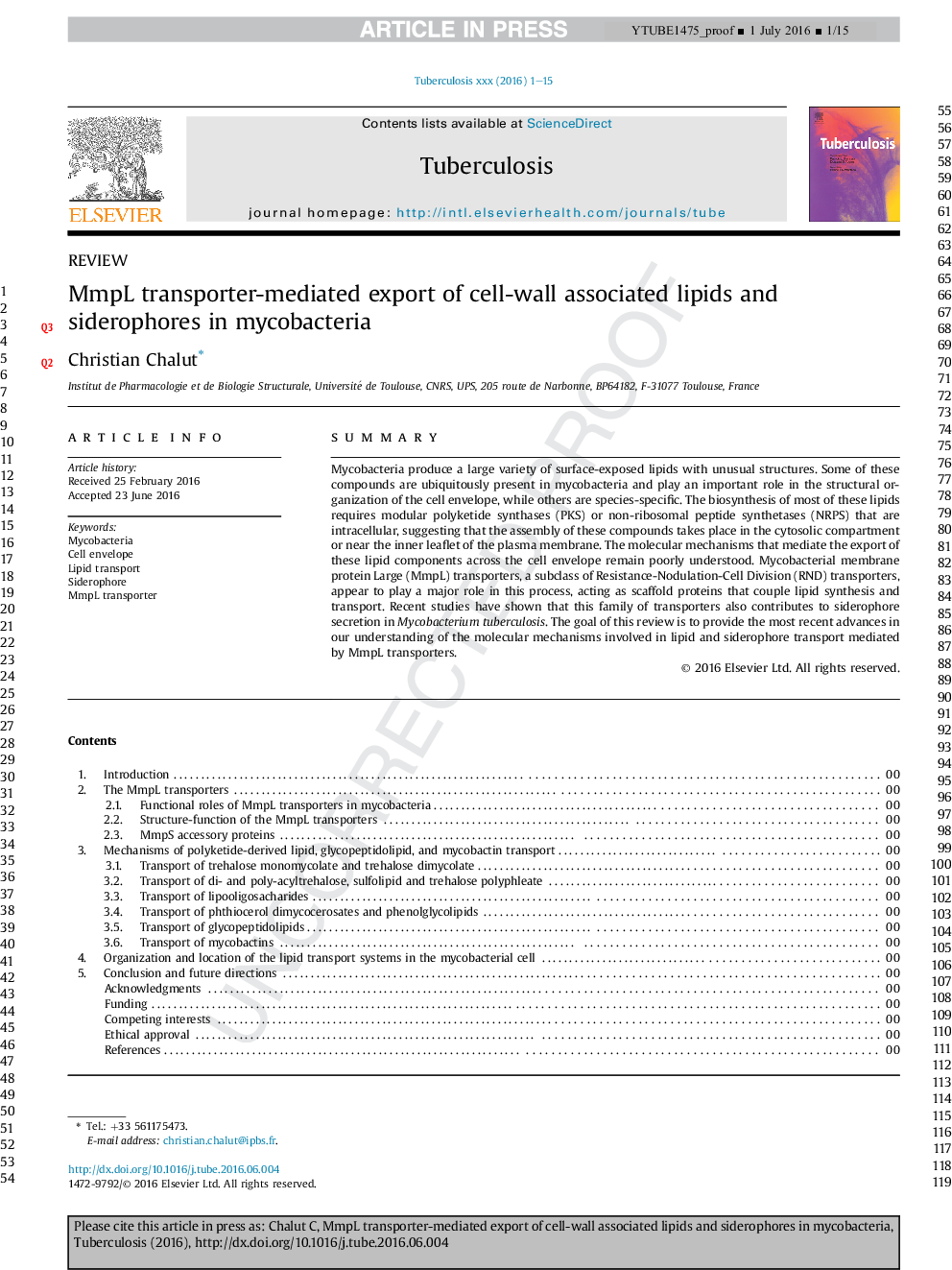| Article ID | Journal | Published Year | Pages | File Type |
|---|---|---|---|---|
| 8485238 | Tuberculosis | 2016 | 15 Pages |
Abstract
Mycobacteria produce a large variety of surface-exposed lipids with unusual structures. Some of these compounds are ubiquitously present in mycobacteria and play an important role in the structural organization of the cell envelope, while others are species-specific. The biosynthesis of most of these lipids requires modular polyketide synthases (PKS) or non-ribosomal peptide synthetases (NRPS) that are intracellular, suggesting that the assembly of these compounds takes place in the cytosolic compartment or near the inner leaflet of the plasma membrane. The molecular mechanisms that mediate the export of these lipid components across the cell envelope remain poorly understood. Mycobacterial membrane protein Large (MmpL) transporters, a subclass of Resistance-Nodulation-Cell Division (RND) transporters, appear to play a major role in this process, acting as scaffold proteins that couple lipid synthesis and transport. Recent studies have shown that this family of transporters also contributes to siderophore secretion in Mycobacterium tuberculosis. The goal of this review is to provide the most recent advances in our understanding of the molecular mechanisms involved in lipid and siderophore transport mediated by MmpL transporters.
Related Topics
Life Sciences
Immunology and Microbiology
Applied Microbiology and Biotechnology
Authors
Christian Chalut,
